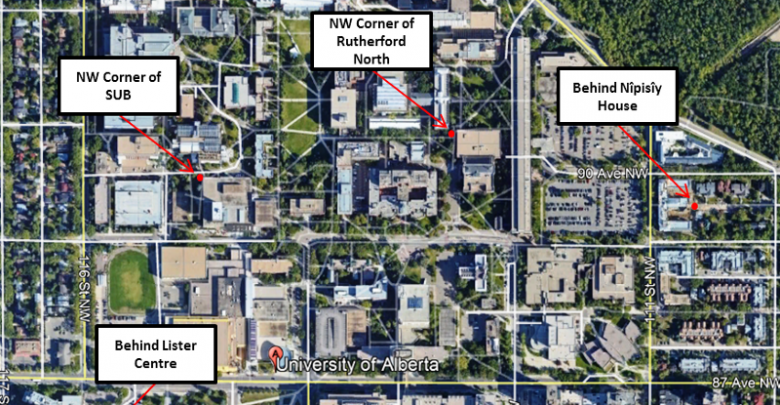 Hallie Brodie (The Quad)
Hallie Brodie (The Quad) On October 17, the familiar smell of cannabis was prevalent in the air. Smokers, instead of being in the shadows looking over their shoulders, were collected in the open, situated next to an unassuming but revolutionary sign: a pot leaf with a green circle. While some continue to scowl at the smell, a victory in moderate regulation and a dramatic increase in personal liberties has occurred. Cannabis users can now legally consume on campus.
The University of Alberta has taken one of the most liberal approaches to cannabis of any University in Canada, designating 4 different spots on North Campus as cannabis friendly. This lax approach is reflected in the City of Edmonton’s laws as well. Cannabis users are on campus, so it’s imperative to give them a place they can consume comfortably with societal acceptance. Both EPS and UAPS are focusing on cannabis education, which is reasonable while people adjust to legalization and its new rules.
Some have decried the U of A regulations as too strict, so it’s important to put it in perspective relative to other universities in Canada. Schools which reside in cities banning all public consumption of cannabis are following suit on their campuses, such as the University of Calgary.
A few schools have slammed the regulation hammer down to the point of ridiculousness, including McGill, which has not only banned smoking and vaping, but also edibles, leaving huge questions about such a ban will be enforced. The British Columbia Institute of Technology (BCIT) has cited ‘safety concerns’ in justifying their banning of cannabis, which is hypocritical as BCIT has an on-campus bar serving alcohol. The presence of a bar or cannabis consumption site on campus doesn’t automatically result in employees and students compromising themselves and others’ safety, as people still have the responsibility of coming to work sober.
Many campuses already had smoke-free policies in place, such as NAIT, McMaster University, and the University of Toronto. These universities already banned tobacco, so banning cannabis was logical; the U of A, on the other hand, permits tobacco smoking on campus, so it was logical to allow cannabis as well. Similar to the U of A, the University of British Columbia has allowed cannabis consumption in their ‘smoking gazebos.’ Edmonton and the U of A stick out by having one of the most ‘chill’ cannabis policies in the country, so if this system works well here, they’re setting a positive example for other institutions and municipalities.
Noting that a complete campus smoking ban may come in the future, the rules currently in place make sense. The logical next step would be to also limit tobacco consumption to these four locations.
Where before cannabis users were tucked away, it’s great to see them given a common cultural space. While the Rutherford area has been criticized by some for being in the middle of a walkway, the fact is that for a consumption location to be successful, it needs to be centrally located. And once edibles are legal to be sold, they will eliminate many of the concerns people have with cannabis consumption, as edibles are discrete and scent-less, allowing people to enjoy cannabis without encroaching on others’ fresh air.
While being a long way away from Amsterdam cafes, the current consumption locations provide a place for consuming students while still appeasing students bothered by the smoke and smell. Although some may have preferred a complete ban of smoking on campus, the designated consumption places fit within the university’s current tobacco policy, and if the university decides to go smoke-free, cannabis can be included in that prohibition. The U of A has set the gold standard on the consumption of greens.




